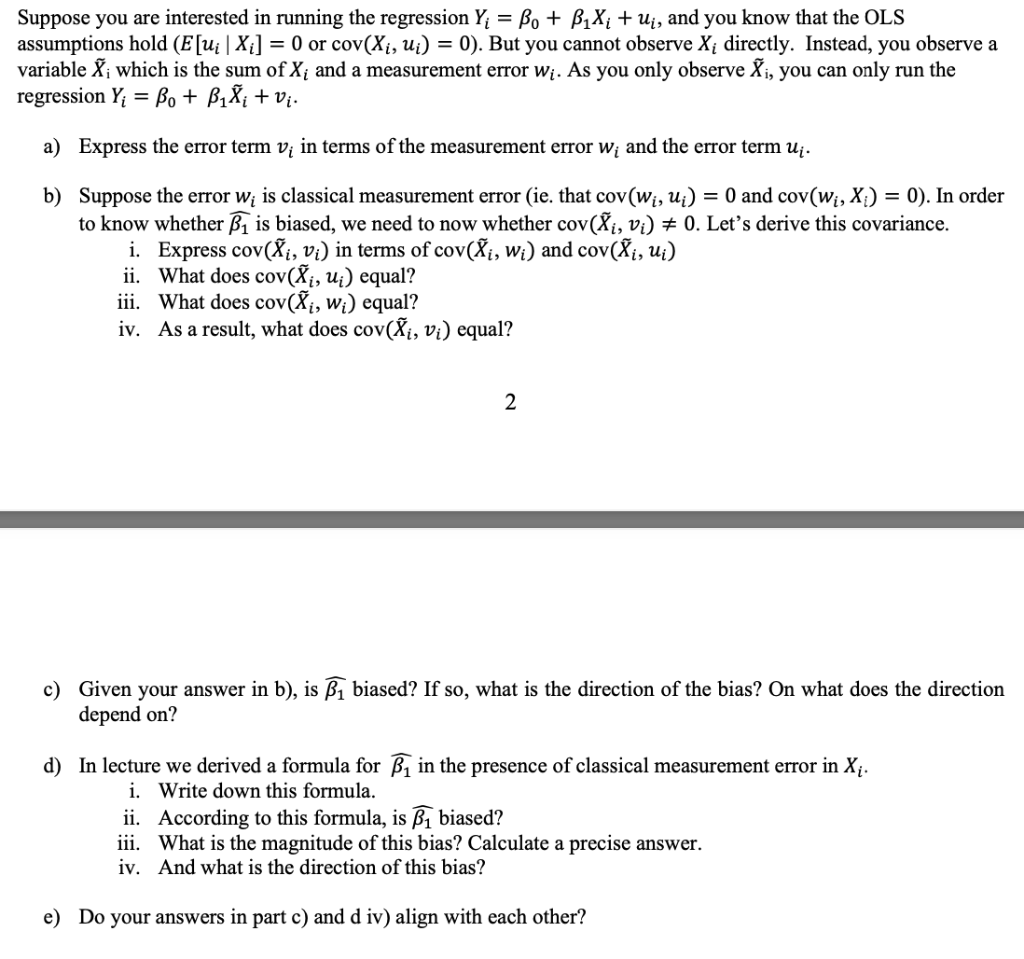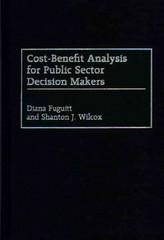
Suppose you are interested in running the regression Yi=0+1Xi+ui, and you know that the OLS assumptions hold (E[uiXi]=0 or cov(Xi,ui)=0). But you cannot observe Xi directly. Instead, you observe a variable X~i which is the sum of Xi and a measurement error wi. As you only observe X~i, you can only run the regression Yi=0+1X~i+vi. a) Express the error term vi in terms of the measurement error wi and the error term ui. b) Suppose the error wi is classical measurement error (ie. that cov(wi,ui)=0 and cov(wi,Xi)=0 ). In order to know whether 1 is biased, we need to now whether cov(X~i,vi)=0. Let's derive this covariance. i. Express cov(X~i,vi) in terms of cov(X~i,wi) and cov(X~i,ui) ii. What does cov(X~i,ui) equal? iii. What does cov(X~i,wi) equal? iv. As a result, what does cov(X~i,vi) equal? 2 c) Given your answer in b), is 1 biased? If so, what is the direction of the bias? On what does the direction depend on? d) In lecture we derived a formula for 1 in the presence of classical measurement error in Xi. i. Write down this formula. ii. According to this formula, is 1 biased? iii. What is the magnitude of this bias? Calculate a precise answer. iv. And what is the direction of this bias? e) Do your answers in part c) and d iv) align with each other? Suppose you are interested in running the regression Yi=0+1Xi+ui, and you know that the OLS assumptions hold (E[uiXi]=0 or cov(Xi,ui)=0). But you cannot observe Xi directly. Instead, you observe a variable X~i which is the sum of Xi and a measurement error wi. As you only observe X~i, you can only run the regression Yi=0+1X~i+vi. a) Express the error term vi in terms of the measurement error wi and the error term ui. b) Suppose the error wi is classical measurement error (ie. that cov(wi,ui)=0 and cov(wi,Xi)=0 ). In order to know whether 1 is biased, we need to now whether cov(X~i,vi)=0. Let's derive this covariance. i. Express cov(X~i,vi) in terms of cov(X~i,wi) and cov(X~i,ui) ii. What does cov(X~i,ui) equal? iii. What does cov(X~i,wi) equal? iv. As a result, what does cov(X~i,vi) equal? 2 c) Given your answer in b), is 1 biased? If so, what is the direction of the bias? On what does the direction depend on? d) In lecture we derived a formula for 1 in the presence of classical measurement error in Xi. i. Write down this formula. ii. According to this formula, is 1 biased? iii. What is the magnitude of this bias? Calculate a precise answer. iv. And what is the direction of this bias? e) Do your answers in part c) and d iv) align with each other







